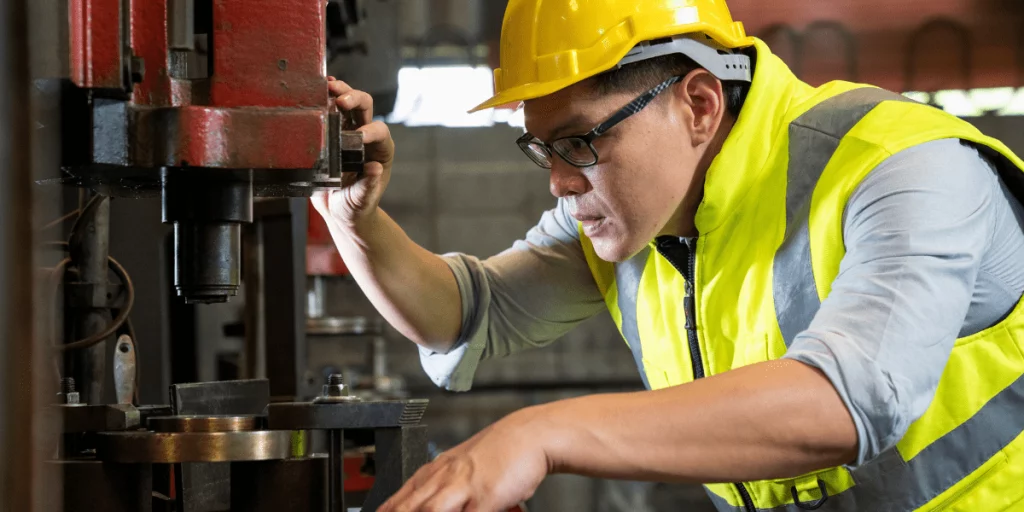There are many common causes of equipment failure as it is a regular phenomenon in the manufacturing industry. But, equipment failure are two words maintenance managers and leaders dread to hear. This is because it can result in manufacturing downtime, higher repair costs, health and safety implications for employees, and affect production and the delivery of products and services.
What is Equipment Failure?
Equipment failure, or machine failure, is considered as any event in which a piece of equipment underperforms or stops operating in the way in which it was intended to. In short, the term “equipment failure” can encompass different scenarios and severity levels. Therefore, based on the severity of the problem and functionality of the equipment, equipment failure can be divided into two broad categories:
1. Complete Failure
If an event causes a piece of equipment to completely lose its value, then this is considered as complete failure. In other words, complete failure is easy to identify, as it makes the equipment completely unusable. For example, common causes of complete failure include vessel, pipe, or valve ruptures, engine breakdowns, turbine propeller breakdowns, severe boiler or HVAC malfunctions, etc.
2. Partial Failure
If any event causes a piece of equipment to partially lose its value, then this is considered a partial failure. In other words, there may be certain instances where the equipment functionality operates, but can only partially meet its intended performance. For example, common causes of partial failure include wear and tear, corrosion, unclean air filters, improper lubrication, etc. In many cases, equipment that experiences partial failure can be returned to optimal working conditions through corrective maintenance.
The Four Most Common Causes of Equipment Failure
Equipment failure starts somewhere and can seem unpredictable at times. There are several reasons that can cause a piece of equipment to fail or underperform. The following are four of the most common causes of equipment failure.

1. Regular wear and tear
Regular wear and tear is one of the most common causes of equipment failure and quite frankly, it is inevitable regardless of the type of equipment. Even when following the best practices, the repeated use of equipment will eventually show signs of wear and tear, or also known as metal fatigue. However, there are a few reasons that can speed up equipment failure. This includes bad operating conditions, improper usage, lack of routine maintenance, and poor storage conditions. So, when these issues are left unaddressed, the damage that occurs as a result of wear and tear can be destructive.
2. Lack of preventive maintenance
The second most common cause of equipment failure is the lack of preventive maintenance. A lot of equipment requires routine maintenance for optimal performance. But, preventive maintenance is often the first task to get disregarded when a company is short-staffed and overwhelmed. Moreover, it’s easy to push routine maintenance to the side when equipment seems to be running fine, and many companies assume that their experienced employees will identify impending trouble before total equipment failure occurs. Even so, equipment failures aren’t easily detectable and often go unnoticed. In other cases, companies may just not efficiently plan methods for ensuring that routine maintenance is conducted. Nonetheless, by tracking equipment and machinery with asset tags, companies can help keep their maintenance schedules on track and their equipment operating at maximum operational efficiency.
In short, preventive maintenance is an aspect of a manufacturing operation that should never be disregarded. By taking care of your equipment, this will extend its lifespan, ultimately, giving you more for every dollar. Additionally, preventive maintenance is effective in identifying small issues with inexpensive solutions before they become big, costly failures.
3. Improper operation and operator errors
The third most common cause of equipment failure is improper operation and operator errors. Operators may be distracted, lack knowledge on basic operating procedures and safety protocols, and deviate from the actual process. As a result, this leads to various problems that range from equipment downtime to severe safety situations. Therefore, machine operator training is crucial to avoid improper operation and reduce operator errors. A lot of companies will require a minimum level of necessary training for various equipment. In addition, they might also issue training certificates to maintain the appropriate level of competency for operating specific equipment.
4. Bad (or no) reliability culture
The fourth most common cause of equipment failure is bad (or no) reliability culture. In certain organizations, management might have a warped definition of plant reliability. That is to say, they might see any plant, where a piece of equipment is immediately fixed after a failure occurs, as reliable. But, while a quick fix may improve plant reliability and MTTR, this does not mean that the plant is reliable.
What’s more, because of budget limitations, some businesses are unsure about whether they should invest in improving reliability culture or not. This might be because they are not seeing the immediate benefits it has on asset management. Nevertheless, reliability improvement is a long-term benefit, so this is why it may take a while to see a significant return on investment (ROI). Additionally, because many small and medium-sized organizations don’t have long-term planning habits, they fail to comprehend the true benefit of fostering a reliability-driven culture.





